Dates for your Diary
Concert at The Met to mark its 130 year anniversary. Friday 16th September 7pm.
Museum opening times
The Museum is open to the public, free of charge:
Thursday* to Saturday 10am – 1pm
August 100 Club
This month’s prize numbers were drawn by members Ann Thomas and Gillian Yemm and the lucky winners are:-
No. 25 Margaret Phillips £20
No. 03 Colin Price £10
If you would like to join our 100 club and be in with a chance of winning, it costs just £1 a month. Ask at the museum for further details.
 Happy Birthday
Happy Birthday
One of our readers recently celebrated her 90th birthday! Please join with me in wishing Mrs Rita Withers all the best for the year ahead.
British Heart Foundation
Those of you who attended the funeral of Mr Don Bearcroft will be aware that donations in lieu of flowers were collected in his memory and were given to the British Heart Foundation. In total, £180 was collected and our curator, Mrs Peggy Bearcroft, has now received a letter of thanks from the British Heart Foundation and she in turn would like to thank everyone who contributed.
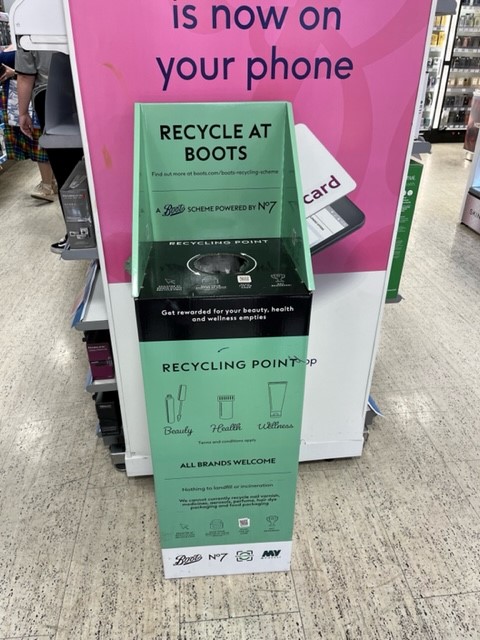 Recycle at Boots
Recycle at Boots
Boots have introduced a recycling scheme designed for all those hard to recycle items. Simply take them along to participating stores such as Cwmbran, Newport town centre and Newport Retail Park and pop in the box provided.
All they ask is that you do not put in any items that you could otherwise recycle at home.
| Yes please |
No thanks |
| Make-up palettes |
Nail varnish |
| Lipsticks |
Aerosols |
| Toothpaste tubes |
Perfume bottles |
| Mascara |
Hair dye packaging |
| Tooth brushes |
Medicines |
For more information use this link
Concert at The Met
In celebration of its 130 year anniversary, The Met is hosting a concert at 7pm on 16th September. It will feature local groups including Abertillery Town Brass Band, Abertillery Youth Drama Music Society, Abertillery Amateur Dramatic Society, LRS Vocal Performing Arts, Showstoppers and Gracie Jayne Fitzgerald. There are still a few tickets left at a cost of £8 each and can be purchased from the box office (01495 533195) or you can book on their website
The Wristwatch
I can still remember having my first wristwatch. It was my parents gift to me on my fifth birthday (though I had yet to learn how to tell the time) and I was thrilled to bits with it! Now I really was growing up and from that day forth I was never without a watch. These days though I wear a ‘smart watch’ that does so much more than just tell me the time. Which got me wondering how the wristwatch began…
We all need to know what time it is to make sure we are where we are supposed to be at any given time and today we have numerous means of checking the time accurately and simply. But it wasn’t always so easy.
The ancient Greeks devised sundials and water clocks while the sandglass or hourglass as we call it, dates back to the 14th century. Then in the 15th century the first spring-driven clocks emerged though they were not very accurate. The spring would be ‘wound’ which in turn moved cogs which in their turn moved the single hand and it was from these that the first time piece designed to be carried around evolved in the 16th century. These early personal watches were cylindrical and would be worn around the neck on a chain. They had no glass so the face would be covered with a hinged lid and they needed winding twice a day. With only one hand they were not much use as a timepiece and were mainly worn as a piece of decorative jewellery.
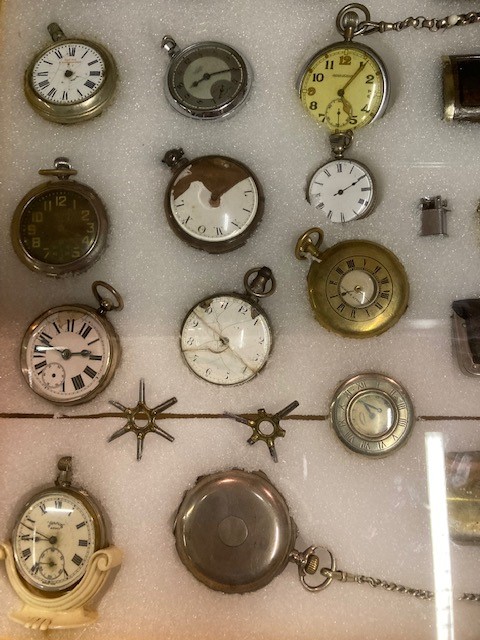 In 1657 the ‘balanced’ spring was invented which increased time-keeping accuracy from within a few hours a day to within a few minutes with two scientists, Englishman Robert Hooke and Dutchman Christiaan Huygens both laying claim to the invention.
In 1657 the ‘balanced’ spring was invented which increased time-keeping accuracy from within a few hours a day to within a few minutes with two scientists, Englishman Robert Hooke and Dutchman Christiaan Huygens both laying claim to the invention.
This increased accuracy allowed the adding of a second hand, the minute hand, and revolutionised timepieces.
By 1675, thanks to the introduction of the waistcoat by Charles II, the early ‘pendant’ watches evolved into the fob watch or ‘pocket watch’ and the museum has quite a few of these contained within one of the drawers in the Bon Marche display. They were very popular with gentlemen though women continued to wear pendant watches well into the 20th century (I still have two wind-up pendant watches purchased in the 1970/1980s, that are fully operational today).
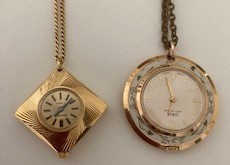 The very first watch to be worn on the wrist is thought to have been owned by Elizabeth I in 1571 who received the gift from a potential suitor, Robert Dudley. Like the early pendant watches though it was more a piece of jewellery, in this case a bracelet, rather than a way of telling the time. The first Swiss wristwatch was made in 1868 by Patek Phillippe for the Countess of Koscowicz of Hungary though these early watches were basically a pocket watch fitted with a leather strap. It wouldn’t be until the end of the 19th century that men would start to wear wristwatches and even then it was mainly by the military who recognised the importance of being able to synchronise manoeuvres.
The very first watch to be worn on the wrist is thought to have been owned by Elizabeth I in 1571 who received the gift from a potential suitor, Robert Dudley. Like the early pendant watches though it was more a piece of jewellery, in this case a bracelet, rather than a way of telling the time. The first Swiss wristwatch was made in 1868 by Patek Phillippe for the Countess of Koscowicz of Hungary though these early watches were basically a pocket watch fitted with a leather strap. It wouldn’t be until the end of the 19th century that men would start to wear wristwatches and even then it was mainly by the military who recognised the importance of being able to synchronise manoeuvres.
The wristwatch continued to evolve and in 1923 a British watch repairer came up with the ‘self-winding’ (automatic) wristwatch and a few years later the wristwatch would be revolutionised again with the electronic watch or ‘quartz’ as it would more commonly be known. These watches had little moving parts but still had traditional analogue faces but that was about to change with the LED digital face becoming commonplace in the late 1970s though the digital face never truly usurped the analogue.
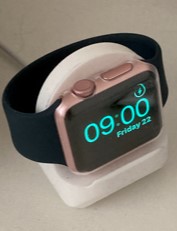 Which brings me back to today and the mini-computer on my wrist otherwise known as the ‘smart watch’. The all-singing, all-dancing water-proof watch, always-accurate-to-the-second watch, that can have analogue, digital, animated, colour-change-to-match-your-outfit face, speak-the-time face that tells me not just the time but allows me to make and receive phone calls, pay for goods in shops and even monitors my heart rate. And at night, while sitting in its recharging dock, it doubles as a bedside alarm clock! Whatever next for the wristwatch I wonder?
Which brings me back to today and the mini-computer on my wrist otherwise known as the ‘smart watch’. The all-singing, all-dancing water-proof watch, always-accurate-to-the-second watch, that can have analogue, digital, animated, colour-change-to-match-your-outfit face, speak-the-time face that tells me not just the time but allows me to make and receive phone calls, pay for goods in shops and even monitors my heart rate. And at night, while sitting in its recharging dock, it doubles as a bedside alarm clock! Whatever next for the wristwatch I wonder?
Sally Murphy
https://en.wikipedia.org/wiki/History_of_watches
https://en.wikipedia.org/wiki/Watch#Digital
WIMBERRY PICKING
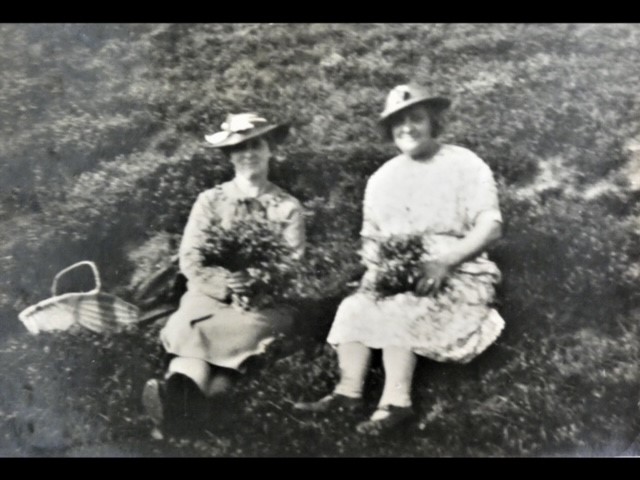
The photo shows my Nana (left) and her sister-in-law picking heather and wimberries about a hundred years ago. They are very stylishly dressed for wimberry picking! It's a lovely photo. My grandparents introduced me to hill walking when I was about 8 in the 1950s and my Nana wore a similar outfit even then – hat, skirt, thick stockings and stout boots. But to move on to wimberries; there are various different words for the fruit and various ways to spell wimberries but this is the version used most often locally and so it is the one I will stick with.
When I was growing up wimberries were a part of late summer life – you went up the mountain and picked. We all had our favourite spots for picking. Never mind that the fruits are fiddly and you end up with stained fingers and clothes, who can resist a wimberry tart?
Sadly, it is some years since I ate one. There don't seem to be so many wimberries around and they ripen earlier – global warming? Also, you never seem to see them in the shops any more. They were never a regular feature, but a greengrocer or local shop would occasionally have a punnet for sale, or enterprising children would sell them in the street.
Maybe I will take a container with me on my next walk. You just have to sure not to mistake a bit of sheep poo for an extra large wimberry!
Jen Price
Why English is Hard to Learn
We’ll begin with box; the plural is boxes,
But the plural of ox is oxen, not oxes.
One fowl is a goose and two are culled geese,
Yet the plural of moose is never called meese!
You find a lone mouse or a house full of mice,
But the plural of house is houses, not hice.
The plural of man is always called men,
But the plural of pan is never pen.
If I speak of a foot and you show me two feet,
Then I give you a book, would a pair be called beek?
If one is a tooth and whole set are teeth
Why shouldn’t two booths be called beeth?
If the singular’s this and the plural is these;
Should the plural of kiss be ever called keese?
We speak of a brother and also of brethren
But though we say mother, we never say methren.
Then the masculine pronouns are he, his and him;
But imagine the feminine…she, shis and shim!
Anonymous
Australia
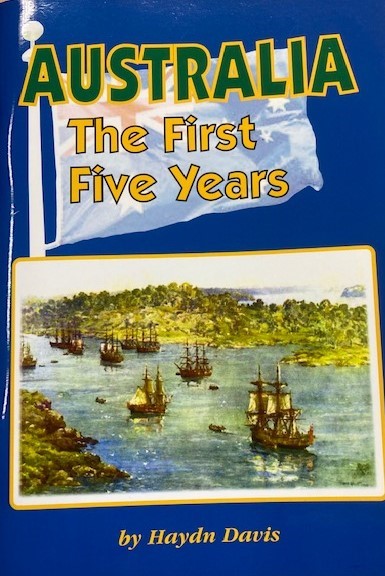 The First Five Years by Haydn Davis
The First Five Years by Haydn Davis
On May 18th 1787, two small British warships* slipped their moorings in Portsmouth Harbour and sailed out into the English channel at the beginning of what was to prove to be one of the epic voyages of British maritime history. Following them, in close order, were nine other ships, all civilian merchantmen, carrying marines, convicts and supplies. This, the First Fleet as it became known, carried a total of about 1,500 souls who were to spend the next 8 months crossing 16,000 miles of tempestuous, mostly uncharted, ocean – a feat of unprecedented and incredible navigation, discipline and human endurance!
But, if conquering this challenge were not enough, these pioneers now found themselves marooned on a pinprick of a vast, unexplored land, apparently forsaken by an uncaring home government. Years of intense hardship and suffering followed as the small colony struggled to withstand famine, starvation, disease and native attack until Australia stood on its own, safe from the claims of all other nations.
*HMS Sirius and HMS Supply
This book is on sale at the museum and can be yours for just £2.50.
Final voyage of the Oceanos
Heaven forbid that one should find oneself on a cruise ship that is sinking but if the unthinkable were to happen one could depend on the Captain and his trained crew for help and guidance surely? This true story unfolds over two days…
Day 1 - 3rd August 1991
The Greek-owned liner Oceanos, is cruising around the coast of South Africa and on board are 581 passengers, entertainers and crew. Among the entertainers are Moss Hills and his wife Tracy, both guitarists, Robin Boltman and Julian Butler (stage name Russell) both magicians/comedians and Lorraine Betts, the cruise director.
The Oceanos was due to leave the South African port of East London for Durban on the final leg of its seven day cruise however the sea was quite rough and sailing was delayed in the hope of an improvement in the weather. After several delays, the Captain, Yiannis Avranas, announced that the weather was better ‘further out to sea’ and that it was safe to set sail.
7pm. Following the ‘sail away’ party, normally held on deck but today held in the Four Seasons lounge, the entertainment crew were eating their dinner in an adjacent dining room to the passengers and Moss noticed that, with waves tossing the ship around, the crew were struggling to serve dinner and passengers were finding their dishes sliding around on the tables. However what they didn’t know was that the storm had ruptured steel plating in the ship’s bowels and it was taking on water.
After dinner Moss went below to collect his wages and was concerned when some equipment in the office crashed to the floor. The ship was still taking a pounding and Moss decided to go to the lounge and check on the entertainment equipment there as the evening show was due to start at 10pm. There, Moss tied the speakers down (discreetly) as he didn’t want to alarm the passengers who were already starting to gather in readiness for the evening show. He then returned to his cabin and was surprised to see some crew members dashing around wearing life jackets. Some were stuffing personal items in bags and some looked to be wet. Concerned, he sought out his wife and told her to change into jeans and sensible shoes as they might need to abandon ship!
Around 9.30pm a loud thud was heard and the power went out. By this time the ship was listing badly and Moss realised the engines had stopped. Dim emergency lighting came on and the passengers were getting concerned. Moss and magician, Robin Boltman, started the evening show (later joined by Tracy) in an attempt to try and carry on as normal and keep the passengers calm but with the ship rocking badly and their repertoire all but sung out, Lorraine Betts, the cruise director, went to speak to the captain who assured her the ship had an engine problem only and was not sinking.
Not convinced Moss, accompanied by the other magician Julian Butler, went below to investigate. Down in the surprisingly empty ‘crew-only’ bowels of the ship, they discovered that some water-tight doors had been closed and water could be heard sloshing about behind them.
Meanwhile, back in the lounge, frightened passengers, now wearing their life jackets, were gathering seeking reassurance. With furniture sliding around, the passengers huddled together on the floor.
Up on the Embarkation Deck, Lorraine discovered crewmen had lowered life-boats and many crew, including many of the officers, had already left in under-filled lifeboats. There had still been no public announcement and the captain was still insisting this was just precautionary and that the ship was not sinking! It was left to the entertainment team to figure out how to launch the remaining lifeboats and to organise women and children into them..
As is the requirement these days, the Oceanos had enough lifeboat capacity for everyone on board however with some crew saving themselves and not filling the boats, they were running out! When they were down to the last lifeboat, with nearly 300 people still on board, the remaining crew showed their true colours; with themselves safely on board, they tried to launch the lifeboat with just 50 on board even though the boat could hold 99. Lorraine and Moss managed to delay them long enough to get another 20 passengers onto the lifeboat before it was lowered.
However they were now out of lifeboats and time was running out for the remaining 220 souls on board.
To be concluded next month!
Sally Murphy
Top Of Page
